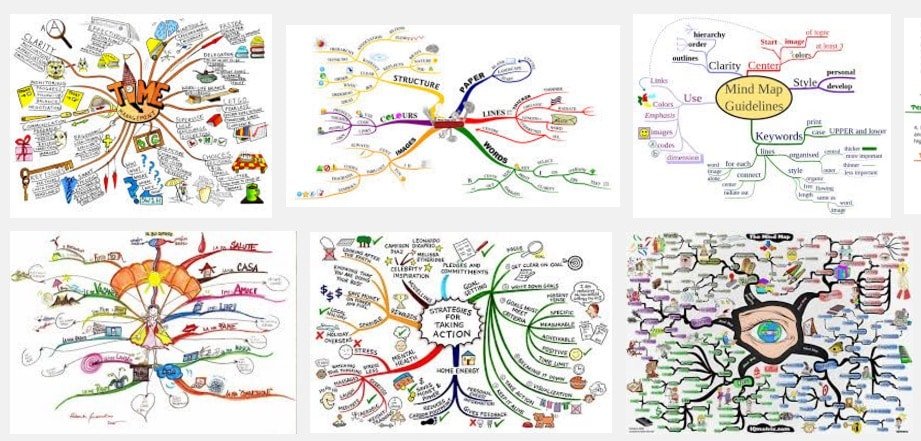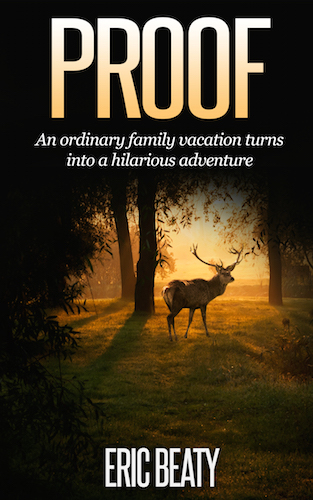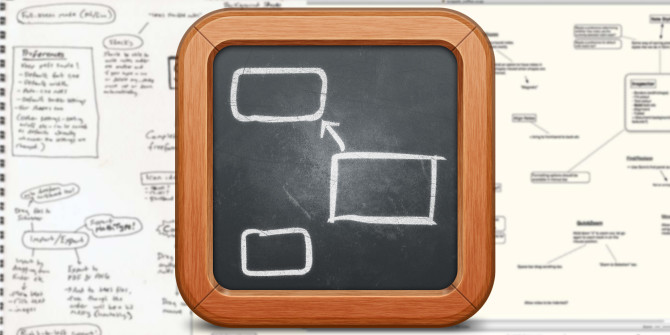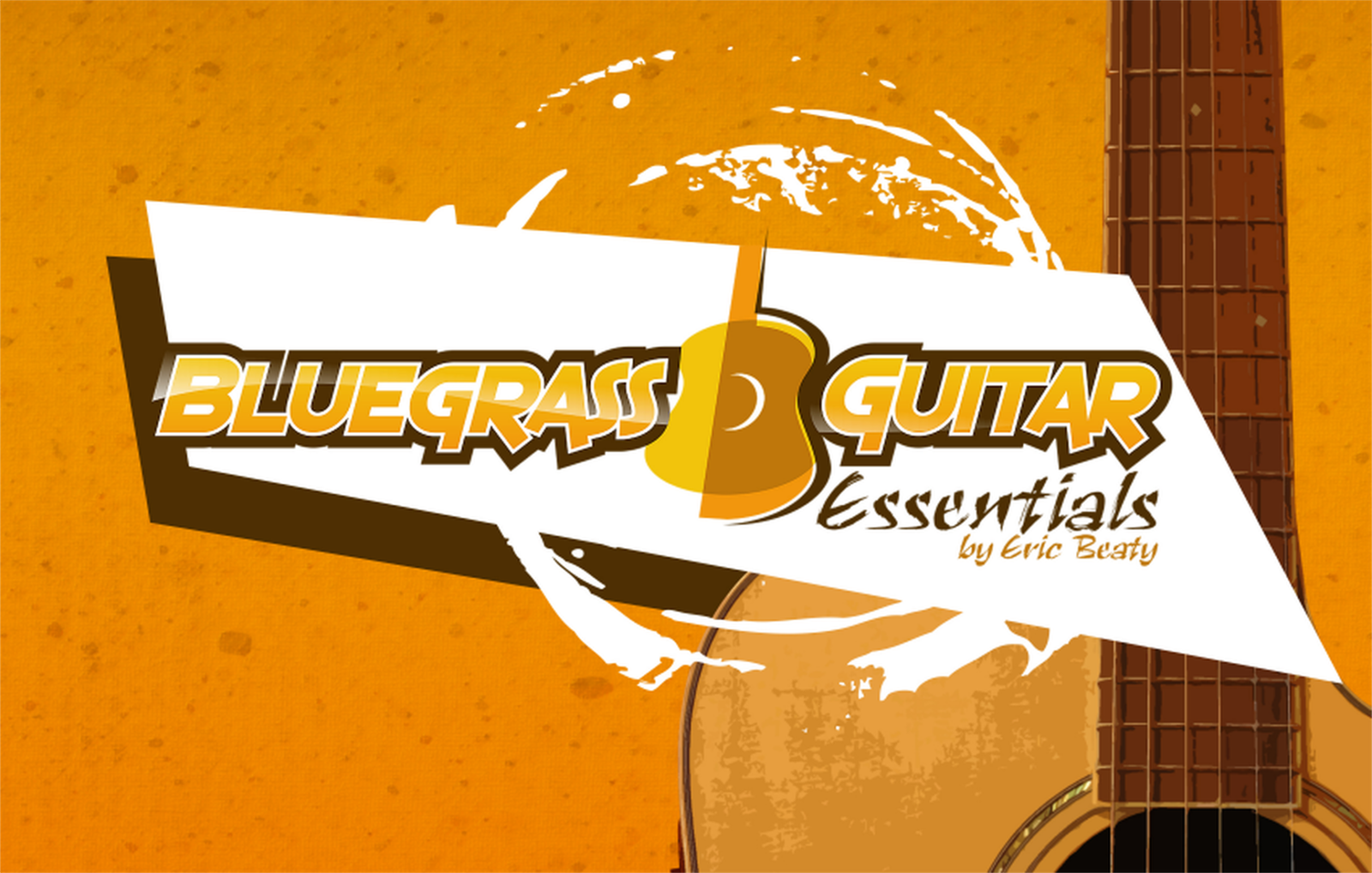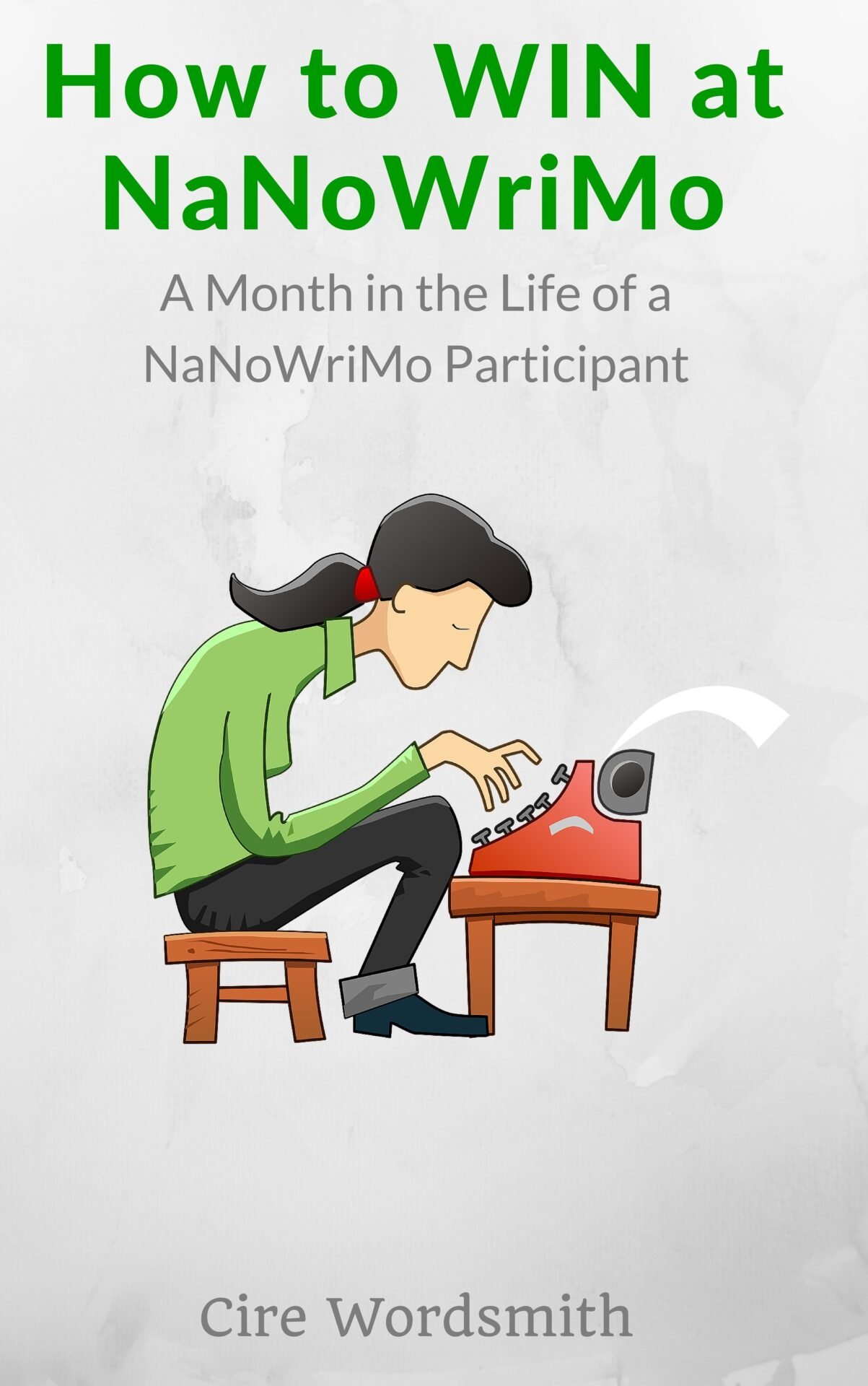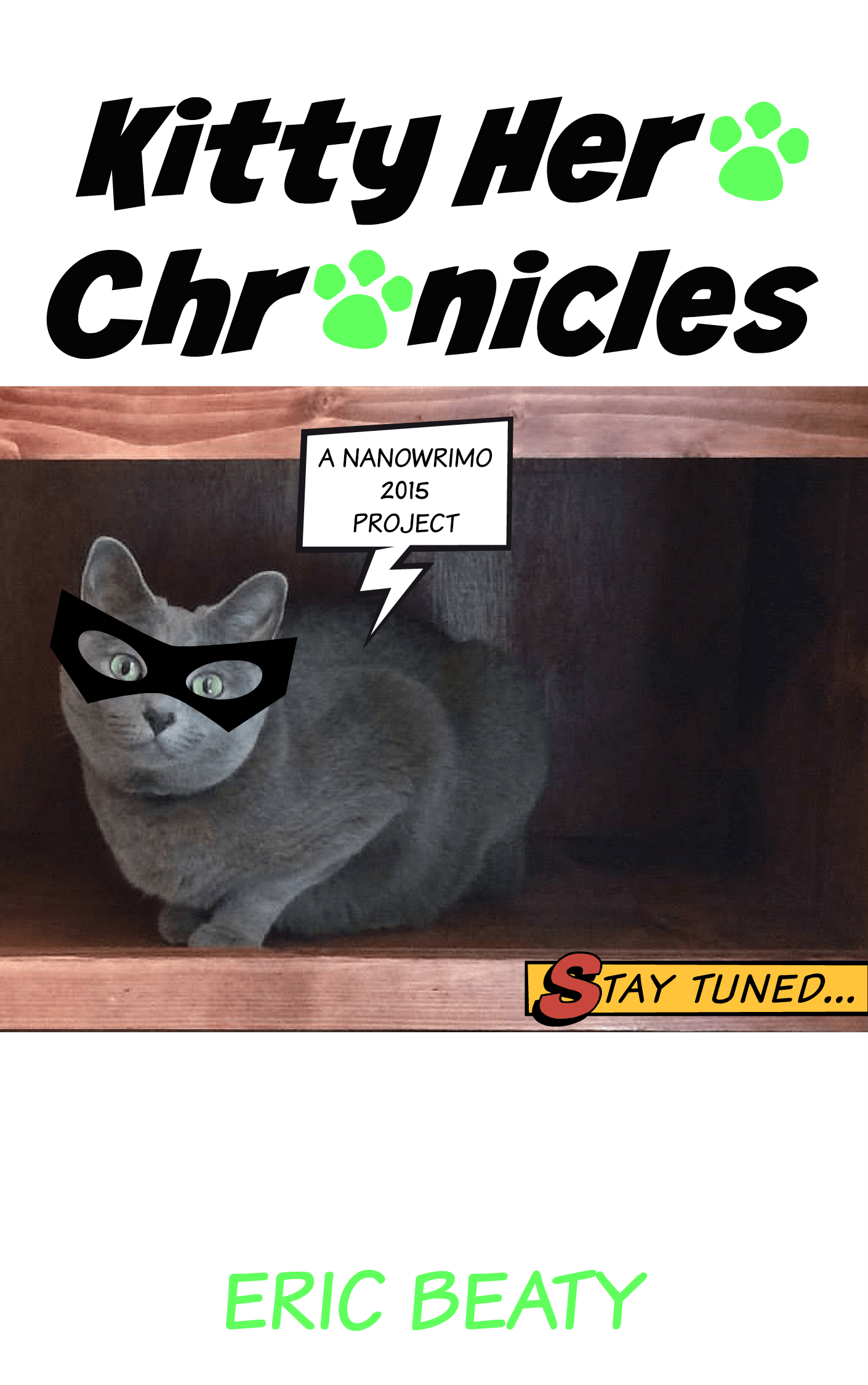When it comes to brainstorming, mind mapping (also known as clustering) is one of the best, most effective tools you can use. And the best news: mind maps are fun and easy to create. All you need are a few simple tools:
- A single idea to start with
- A piece of paper (landscape orientation)
- A few multi-colored pens, pencils, crayons, or other fun writing utensils
Or, if you're more technically inclined, you can utilize the many free/trial mind mapping software apps available online (more on these below).
So join me in this special screencast presentation and complementary blog post as I explore how to use mind mapping as a tool for brainstorming, writing, product creation, and more!
More...
Mind Mapping 101
For starters, the video above is a presentation that fellow author J.R. Biery (whom you can hear conversing with me in the video) asked me to do for our local writer's critiquing group. I was honored to show the attendees this amazing tool and how I've used it for everything from writing, to creating several products, even to website design.
Much of what I'm going to go over in this blog post is discussed in the video above, but I would like to make it easier on you by listing here some of the invaluable links to the resource materials mentioned in the video.
That being said, don't skip the video just because some of the ideas are presented here; there is much more to learn in the video than I can duplicate in a single blog post.
To begin with, the self-proclaimed inventor of mind mapping is a guy by the name of Tony Buzan.

Mind Mapping Inventor Tony Buzan
I say self-proclaimed because, according to Wikipedia...
Buzan recommends mind mapping with various colors and bold, flowing lines, sort of like a tree with branches. I myself usually just start with one color and straight lines; this is mainly so I can get the ideas down on a sheet of paper as fast as they come to me without having to worry about creating a work of art. That part comes later (hopefully in the form of a new product).
Examples of Mind Mapping
Here are some examples of such mind maps that could easily be considered works of art:
And a few of my own mind maps, some of which I've recently created via the use of my new planner:
Click the images above then click "View full size" in the gallery page see the originals
As you can see from some of the mind maps in my own collection—especially the first image, where I show my process for (hopefully) publishing three of my books by the end of this year—mind mapping is a great way to layout your ideas on the page so you can proceed forward in your goals and aspirations, using your mind map as a blueprint for your product creation, writing, etc.
How to Create a Mind Map in 3 Simple Steps
I know some of you are no doubt overwhelmed about the whole process of mind mapping, but honestly, it couldn't be easier. Sure, there are all sorts of ways to be flashy with your designs, and you may even be wondering "How can I create such great works of art? I can't even draw!"
Once again, your ideas—and that's all that mind mapping is, really, just writing down a collection of ideas—don't have to be works of art. Trust me, if you can draw a circle/oval and a line (straight or curved), then you can easily draw a mind map.
Below, I've listed 3 simple steps for creating a simple, yet effective, mind map. Remember, you can use this for any idea; it doesn't have to be limited to your profession, hobbies, or anything else. You can even use it as a grocery shopping list!
One of the best things about this process is you're continuing to expand the other Secondary, Tertiary, etc., ideas as you go, not just focusing on one idea at a time. This is how you end up with massive mind maps like those seen above.
Mind Mapping Software Apps
A More Technical Approach
If you prefer to be more technically savvy, then perhaps mind mapping software is more up your alley. Here are three apps I recommend starting out with:
Scapple (My preferred mind mapping software)
Created by the fine folks who made my favorite writing software of all time, Scapple is one of the most intuitive and easiest to comprehend mind mapping apps on the market today.

And for only $14.99 (at the time of writing this post), it's a steal of a deal for all you can do with it. I've created everything from simple to complex charts and maps since I began using Scapple just a few short months ago. I've even used it to plan the publication for the final two books in my SMART FOCUS series.
And just like Scrivener, Scapple comes with a better-than-standard 30-day Free Trial. What do I mean by better-than-standard? According to Scapple's site, their trial is for 30 days of actual use. Which means if you use it every other day, you'll be able to use it for 60 actual days. In other words, the trial only counts down the days you actually use Scapple. Can't beat that with a stick!
XMind (My previously preferred mind mapping software)
The mind mapping app I've come to really enjoy is the sleek, easy to use XMind. Available in both free and pro versions, XMind implements a very user-friendly interface with a layout that gets out of your way and lets you roam around on the page with little to no interference.
I get all I need out of the free version of XMind (XMind 8), so I've never needed to upgrade; however, if you want a few more features you can check out their pricing page to see what's available in the subscription version (XMind: ZEN).
The Brain: The Ultimate Digital Memory
The Brain is a mind mapping tool I've only recently discovered, so I haven't had time to test it myself; although, based on its features (see the video above), I'd definitely recommend checking it out—at least the free version, to begin with.
With The Brain mind mapping software, you can easily organize your thoughts into a central digital "brain" that quickly arranges itself around whatever thoughts and ideas you focus on. It's more of an organic tool than XMind—if you're into that sort of thing—and is definitely more diverse than just sorting your ideas into random folders and documents on your computer.
You can even attach web links, images, and other files with The Brain's easy drag-and-drop interface. With The Brain, it's easy to see how all your ideas connect to form logical and efficient relationships; I guess you could say it puts a whole new meaning on the term brainstorming.
Check out their pricing page for information on the various levels of functionality. There's a free version of The Brain as well, which is good because their pricing is a bit steep if you ask me.
MindMup (Mind mapping in the cloud)
Another great alternative is an online-based mind mapping program called MindMup. Once again, they have both a free plan and a paid plan called MindMup Gold. Not only that, it's completely open source! Click here to read some documentation on MindMup.)
MindMup is possibly the most minimalistic design of the three mind mapping programs I've listed here, but you may prefer it to the others since there's no need to install anything on your computer. Simply go to MindMup.com and it begins a new project for you.
MindMup allows you to save to the cloud (if you want to share your mind map publicly) or via Google Drive if you would rather keep your work private.
A word of caution, though: I tried this out during the presentation in the video above (on a PC laptop at the same time as I was using my MacBook Air) and found it didn't want to save properly. So before you get very deeply involved in a new project, I would try it out several times with some test projects to make sure it will save correctly.
Mind Mapping: From Page to Product
Taking Mind Mapping to the Next Level
Unfortunately, since the examples I showed at the writer's meeting weren't available as digital copies, I wasn't able to include them in the video above. However, I can give you an overall idea of how the last part of the presentation went.
When creating my popular course Bluegrass Guitar Essentials, I had nothing more than an idea, which then I drew on a single sheet of legal paper. Using the tips listed above, I began drawing my mind map, with the words "Bluegrass Guitar Course" in the center. (I didn't even have the name picked out yet!)
From there, tons of ideas began to form, and I began taking my mind map to the next level—creating a product. Some of the main points (Secondary Ideas) I knew I wanted to cover were as follows:
- Picking
- Rhythm/Strumming
- Songs/Fiddle Tunes
- Gear
- Tuning
- Scales
- Chords
- Fretboard Navigation
- Licks
When, at last, my mind map was complete, and I had a better sense of the scope of the project before me, I saw that I had accumulated a huge body of work to begin my course with. My page was on it's way to becoming a fully-fledged product.
Now that I had a skeleton of ideas to work with, I created a survey and sent it to my YouTube fans, asking what their preferred topics of interest would be. When the results came back, I plugged the information back into my mind map and created an outline from it. This served as the script I would use while recording the videos for the course.
Long story short, I was able to go from a simple sheet of paper to a 7 disc multimedia course, none of which would have happened had I not began with a single idea and committed it to a mind map.
That's how powerful mind mapping can be!
When you get your intangible, abstract ideas out of your head and onto the page, they can easily become tangible, concrete tools that help you make sense of the world around you—and even help you make a profit while you're engaging your creative side.
(That was such an awesome revelation you might want to share it below.)
When you get your intangible ideas out of your head and onto the page, they can become tangible tools for creative profit.
One Last Mind Mapping Tool...Sort of
One of the most helpful tools I've raved about time and time again on YouTube, social media, and everywhere else in between is my go-to tool for organizing my business and personal life. It's also the tool I implemented to further aid me in taking Bluegrass Guitar Essentials from page to product.
It's called Trello...and it's my friend.
It's funny how life works. Up until recently, I never realized I hadn't created a blog post about this handy, absolutely free tool that I brag about so much. Well, that's about to change.
My next blog post is going to showcase the many aspects of what Trello can do (goal setting, organizing, even shopping lists!), how I use it to get things done in my day to day business and personal life, and much more. I'm even going to feature another screencast video to give you a behind-the-scenes look at how I use it!
So be looking for that blog post to release soon.
After mind mapping, outlining, and recording the videos for the course, I used Trello exclusively to help me organize Bluegrass Guitar Essentials into a manageable workflow. (You can see the actual Trello board I used by clicking the above image. Now that the project is done, I haven't used it since, but it's still a good resource to refer to every now and then, especially as a template for new projects/products.)
My BGE Trello board gave me a bird's eye view of my virtual assistants (a video editor, graphic designer, and tablature transcriptionist), my deadlines, and each step of launching the course, both in Webisode and DVD formats.
Honestly, mind map or not, I don't think I could have released this course without Trello. In addition to a mind map, I'd say Trello is my second must-have resource for anything I want to accomplish in life. Again, stay tuned for the full blog post about this coming soon.
So that's it. I know it's been a long post, but I hope I've made it worth your while. Most importantly, I hope I've caused you to consider mind mapping as a way of life—and an indispensable tool for helping you go from page to product to achieved goals to an organized life to...well...the list goes on indefinitely.
Try it on for size if you don't believe me after all the evidence I've given in the topmost video and this blog post itself. I think you might be pleasantly surprised at what you can achieve...when you put your mind on paper.
E
P.S. If this isn't enough information for you, check out these books on mind mapping.
If you’ve found this content to be valuable to you, please share it with others whom you feel it will also benefit by using the share buttons conveniently located below. Also, be sure and add this page to your favorites or bookmarks for future reference. Thank you.
Question: Have you ever used mind mapping as a tool for productivity, creating products, etc.?
Leave a comment below and tell us all about it.
This post created with Thrive Content Builder.
